Commentary:
The first trading day of 2011 brought with it substantial volume and strong gains across all major indices. The small-cap Russell 200 led the charge as it rallied 1.9% on the session. The technology rich Nasdaq closed up 1.5%, while the S&P MidCap 400 rose 1.4% on Monday. The S&P 500 and the Dow Jones Industrial Average ended Monday’s session with gains of 1.1% and 0.8% respectively.
For the first time in several weeks, market internals were decidedly positive. Volume skyrocketed on both the NYSE and the Nasdaq by an impressive 88%. Advancing volume overpowered declining volume on both major indices. The ratio was plus 5 to 1 on the NYSE and plus 4 to 1 on the Nasdaq.
In the November 30th newsletter we stated that “a move back above $5.88 could very well be the catalyst for a sustained reversal” in UNG. Today, UNG witnessed an explosion in volume and closed up almost 5%. The charts below provide a good visual that supports the commentary we made last week.
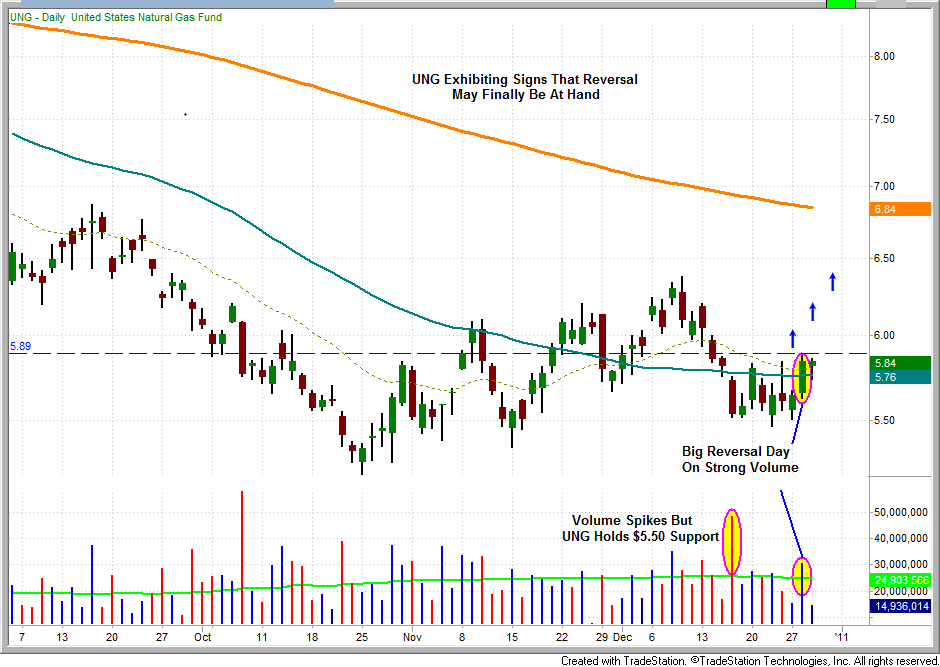
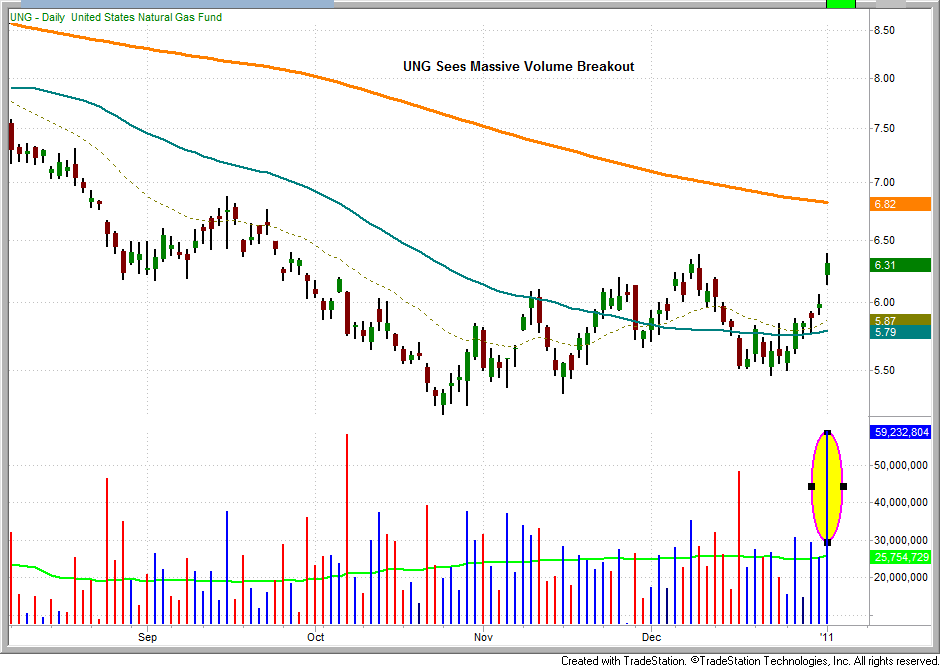
Overall, today’s market action would likely be categorized as bullish by most technical analysts. And for the most part it probably was. However, the market often provides subtle clues that individual ETFs and/or the broad market itself may be nearing a trend reversal. A technical indicator that we use to assist us in gauging the strength behind a current trend is the Accumulation Distribution Price Volume indicator. This indicator uses the relationship between the open and the close of the price bar, and the range of the bar, to weight volume as either Accumulation volume (buying) or Distribution volume (selling). Without getting into overwhelming detail, suffice it to say that the trend direction of the Accumulation Distribution Price Volume Indicator is more important than its whole number value. A divergence between price and the Accumulation Distribution Price Volume line (histogram) may indicate a trend reversal, indicate that the current trend is likely to continue or in some cases provide no signal at all. Below are charts of three ETFs in which this indicator is utilized as a possible leading signal for a trend reversal or as a confirmation of the existing trend. We never use this technical indicator for short term trading as it tends to work better as a leading indicator over a period of weeks or months. Our purpose for discussing it today is to make our readers aware that the strength of the current trend may be weakening. The charts below are self explanatory.
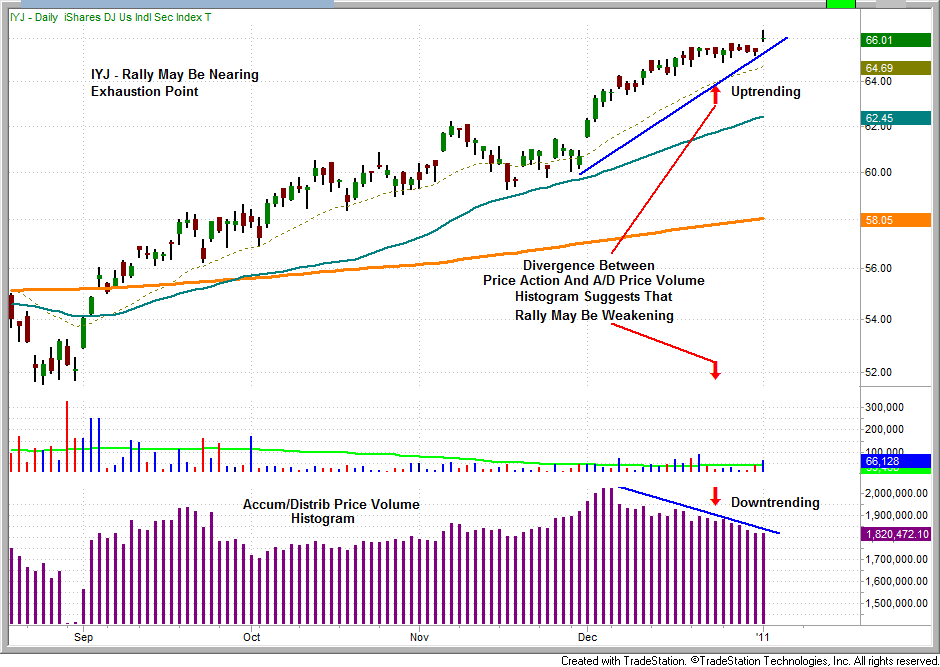
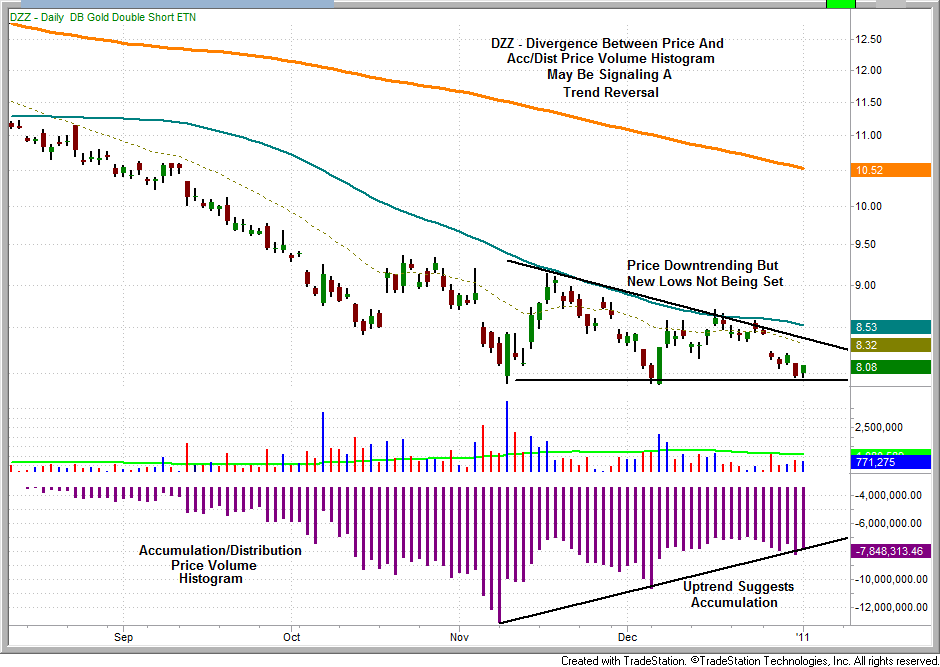
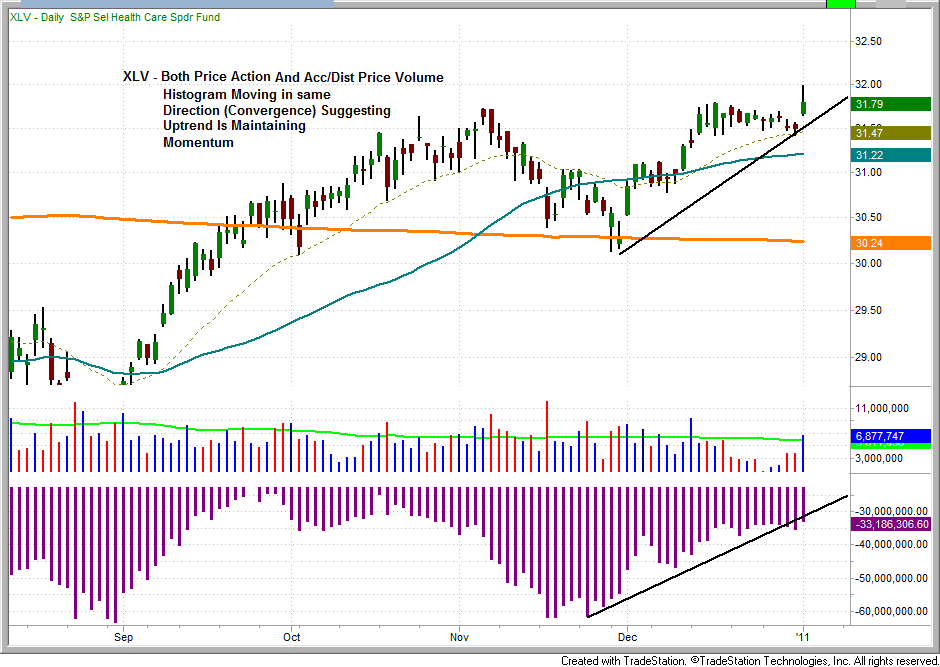
The iShares S&P Small Cap 600 Index ETF (IJR) is poised for a potential breakout move. Over the past eight trading sessions this ETF has seen very high volume, while it has been consolidating. Yesterday, on a massive increase in volume IJR formed a bullish reversal candle and temporarily set a new high. A move back above $70.13 could provide a buy entry for this ETF. We are placing IJR on the watchlist. For our members, trade details can be found in the watchlist portion of the newsletter.
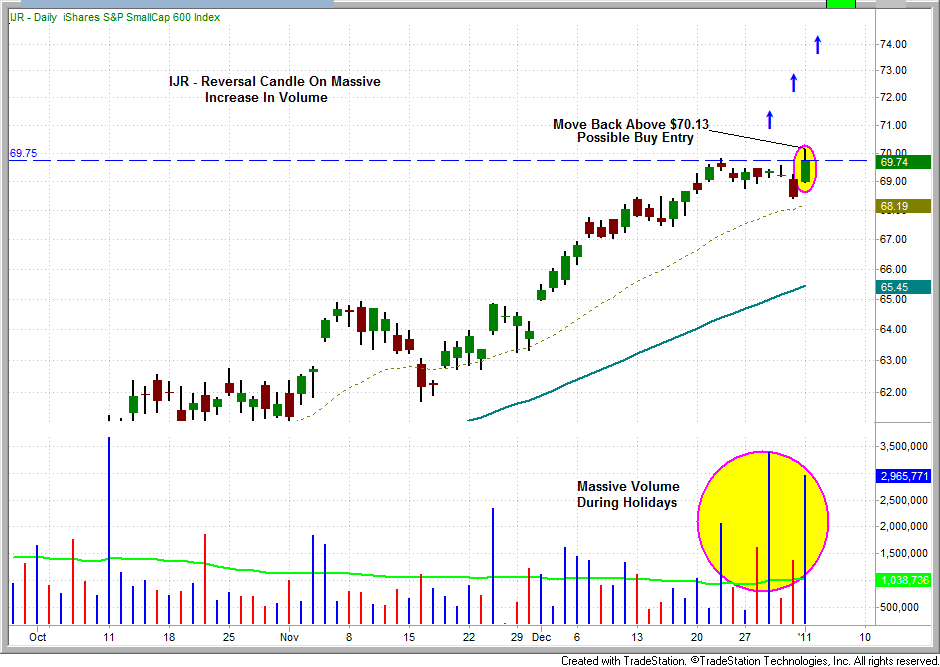
The PowerShares High Yield Equity Dividend ETF (PEY), is exhibiting similar technical characteristics as IJR. On a massive burst in volume yesterday, PEY broke to new highs only to end the day back in the eight day trading range. It also formed a very bullish reversal candle. A gap-up or rally above $8.98 could potentially provide a long entry opportunity for this ETF. We are watching this trade for a possible long entry.
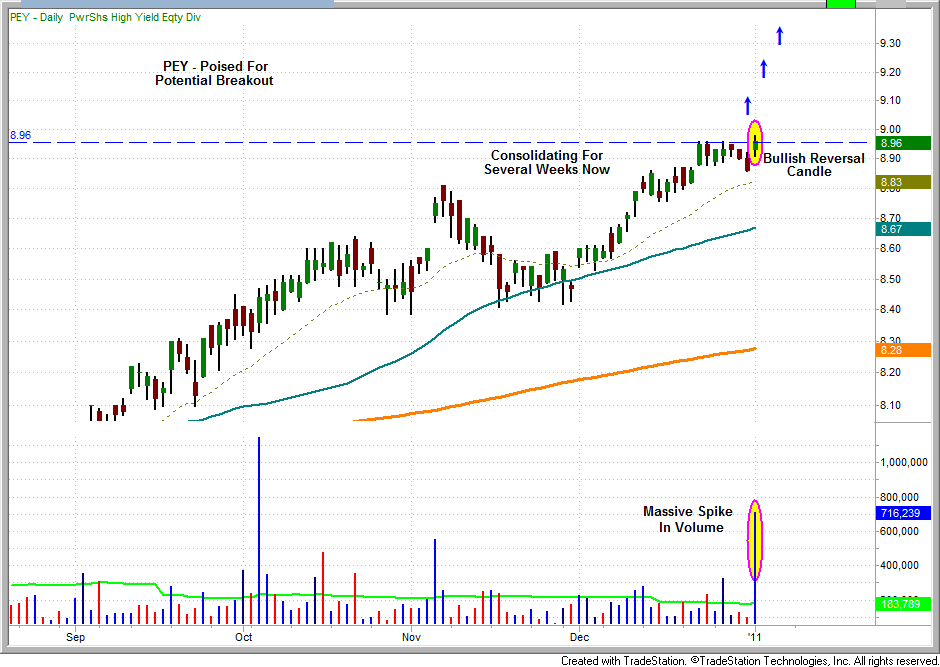
Although trade was heavy and overall market action bullish, a late day flurry of selling suggests that there was selective distribution into strength. Still, most industry groups participated in the rally and the uptrend appears to remain intact.
Today’s Watchlist:

IJR
Long
Shares = 200
Trigger = 70.23
Stop = 68.35
Target = 73.50
Dividend Date = n/a
Notes = see commentary above
Daily Performance Report:
Below is an overview of all open positions, as well as a performance report on all positions that were closed only since the previous day’s newsletter. Net P/L figures are based on the $50,000 Wagner Daily model account size. Changes to open positions since the previous report are listed in red text below. Please review the Wagner Daily Subscriber Guide for important, automatic rules on trigger and stop prices
PBW buy entry triggered yesterday after the first five minutes of trading.
- Reminder to subscribers – Intraday Trade Alerts to your e-mail and/or mobile phone are normally only sent to indicate a CHANGE to the pre-market plan that is detailed in each morning’s Wagner Daily. We sometimes send a courtesy alert just to confirm action that was already detailed in the pre-market newsletter, but this is not always the case. If no alert is received to the contrary, one should always assume we’re honoring all stops and trigger prices listed in each morning’s Wagner Daily. But whenever CHANGES to the pre-market stops or trigger prices are necessary, alerts are sent on an AS-NEEDED basis. Just a reminder of the purpose of Intraday Trade Alerts.
- For those of you whose ISPs occasionally deliver your e-mail with a delay, make sure you’re signed up to receive our free text message alerts sent to your mobile phone. This provides a great way to have redundancy on all Intraday Trade Alerts. Send your request to [email protected] if not already set up for this value-added feature we provide to subscribers.

Having trouble seeing the position summary graphic above?
Click here to view it directly on your Internet browser instead.
Notes:
Edited by Deron Wagner,
MTG Founder and
Head Trader